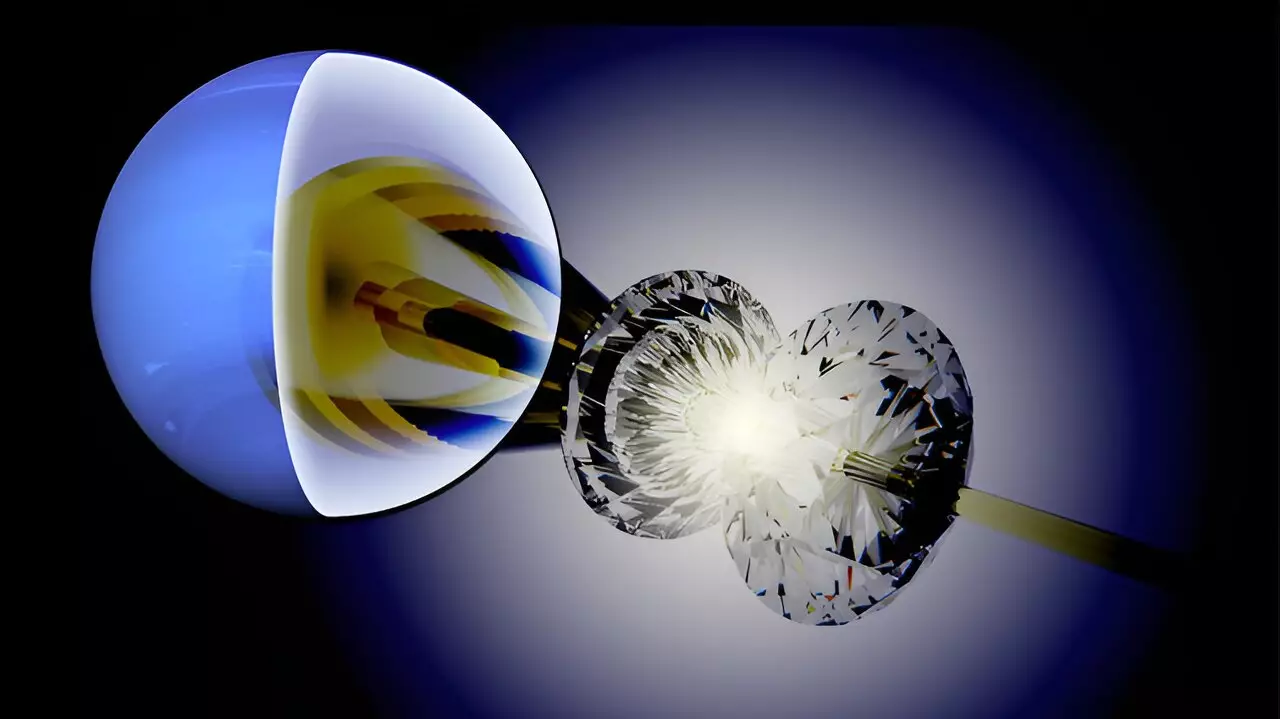Equation of state measurements in high-pressure environments have always been a challenge for scientists in the field of condensed-matter sciences. Recently, an international team of scientists from Lawrence Livermore National Laboratory (LLNL), Argonne National Laboratory, and Deutsches Elektronen-Synchrotron have developed a new sample configuration that improves the reliability of these measurements in a pressure regime not previously achievable in the diamond anvil cell.
The development of the toroidal diamond anvil cell by LLNL has been revolutionary in pushing the static pressure limit in condensed-matter sciences. However, the next crucial step was advancing the sample fabrication for more complex experiments. Static compression experiments to pressures higher than 300 GPa are extremely challenging, and the compression environment is often not ideal. The new sample package developed by the team solves this problem by providing an improved compression environment, resulting in higher quality equation of state data.
The team used the LLNL-designed toroidal diamond anvil cell capable of regularly reaching pressures above 300 GPa with a sample chamber that is on the order of 20 times smaller than the width of a human hair. In this small sample chamber, scientists microfabricated a sample package in a 10-step process. The target material is embedded in a uniform capsule of soft metal, serving as a pressure-transmitting medium. This ensures that stress is uniformly distributed around the sample material, crucial for achieving reliable equation-of-state measurements.
Research Findings
The experiments were conducted at Argonne National Laboratory Sector 16 HPCAT and at Deutsches Elektronen-Synchrotron PETRA-III. The scientists tested this methodology on molybdenum with a copper pressure-transmitting medium, but the sample package developed can be broadly applied across various materials. Co-authors of the paper include researchers from LLNL and Deutsches Elektronen-Synchrotron, showcasing the collaboration between international laboratories in pushing the boundaries of static compression experiments.
Future Implications
According to LLNL scientist Claire Zurkowski, the work on the new sample configuration is just the beginning of sample-package microfabrication in the toroidal diamond anvil cell. The team anticipates that this sample-encapsulation method will push static equation of state calibrations in physics, chemistry, and planetary science materials into the multi-megabar range. This is significant as static compression data at these high-pressure conditions is currently limited, and advancements in sample fabrication will further enhance our understanding of material behavior in extreme environments.
The development of the new sample configuration by the international team of scientists is a major stepping stone in advancing equation of state measurements in high-pressure environments. With the improved reliability of data at pressures exceeding 5 million atmospheres, this research opens up new possibilities for studying materials under extreme conditions. The collaboration between different laboratories highlights the importance of sharing expertise and resources in driving innovation in experimental setups and pushing the boundaries of scientific exploration.


Leave a Reply
You must be logged in to post a comment.